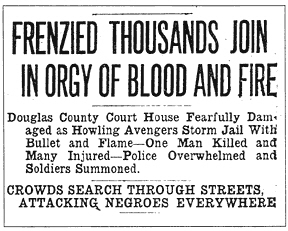History Lingo Lexicon
Below is a list of specialized words and phrases, commonly used by history writers, that are totally unfamiliar at worst, often misunderstood at best, by many readers. Of course there is no intent to make this some sort of "comprehensive" list. It merely includes terms relevant in particular to material on this website. New entries will be added periodically.
Art Deco
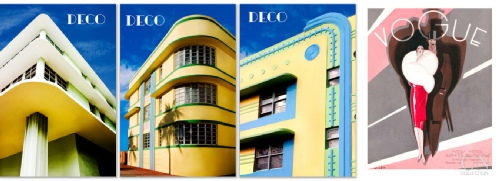
Art Deco is the visual arts design style that characterized what was considered "modern" in the period of the 1920s through World War 2. It rejected the flowery and romantic elements of the previous art period (Art Nouveau), emphasizing instead stark geometric shapes and modern materials (such as aluminum, stainless steel, and plastics.) Color, whether in architecture, clothing, graphic arts, or furnishings and décor was usually starkly vivid and "high contrast." See the Meet MythAmerica Pinterest board on Art Deco for many examples. The style is difficult to clearly describe, but easy to recognize once you see a collection of it!
Art Nouveau
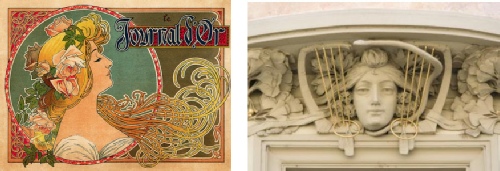
The visual arts design style that characterized what was considered modern and stylish in the period from 1890 through the 1910s. It rejected the stiff, formal lines of neoclassical art and architecture that had been popular in the mid to late 1800s, and emphasized instead romantic, organic, often "flowery" patterns. It was believed that art should become a part of everyday life, and thus even everyday, utilitarian items were embellished with vines and flowers, insects and birds. Color choices were seldom bright or strongly contrasting. The emphasis was on dusty, faded versions of organic colors like yellow, pink, orange, and pale green. See the Meet MythAmerica Pinterest board on Art Nouveau for many examples. The style is difficult to clearly describe, but easy to recognize once you see a collection of it!
Aryan
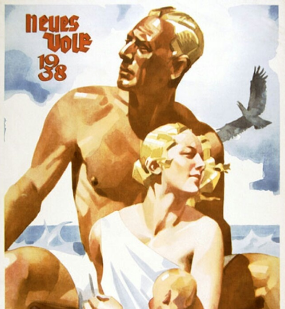
Aryan was originally used as a term by historians, geographers, and linguists to describe groups of people who used the "Indo-
By the time of Adolph Hitler it was commonly used to denote in particular just those native to northern European lands such as Germany, England, and Norway. It was not limited to use by the Nazis–many books by American authors of the same time period used it to promote concepts similar to those of Nazi Germany. It has often been used interchangeably with the term "Nordic." Although not used in most common settings today, you can see it in the writings posted on the websites of a variety of white supremacist groups such as the Aryan Nations.
Blackface

"Blackface" was a style of theatrical makeup used from the 1930s up through the 1960s (in America… and even beyond, in the UK) to give "white people" the appearance of being a Negro. In the early days, burnt cork was rubbed on the face and hands to give them a dark black look. This was replaced in later years by greasepaint or shoe polish. A large area around the mouth was left without the black to make the mouth look bigger, with the lips and area around them often colored red. A person "in blackface" would then often wear outlandish clothing, and a wooly wig to complete what was considered a "humorous" look. The purpose was to perform in a "minstrel" show, a special type of popular entertainment that featured songs and skits, based in particular on making fun of stereotypes of supposed African American culture, speech patterns, and music.
Brown v Board of Education

"In 1951, a class action suit was filed against the Board of Education of the City of Topeka, Kansas in the United States District Court for the District of Kansas. The plaintiffs were thirteen Topeka parents on behalf of their 20 children.
The suit called for the school district to reverse its policy of racial segregation. The Topeka Board of Education operated separate elementary schools under an 1879 Kansas law, which permitted (but did not require) districts to maintain separate elementary school facilities for black and white students in 12 communities with populations over 15,000. " (Source)
The case was named after one of the plaintiffs, a parent named Oliver Brown. The District Court ruled in favor of the school district. The case was then appealed to the Supreme Court, which considered it in the fall of 1954. The Supreme Court ultimately ruled unanimously in favor of the plaintiffs, "separate but equal" was declared to be unconstitutional, and school integration became the law of the land May 17, 1954. It took, of course, almost another 15 years for the federal government to get around to "enforcing" the ruling in many southern states.
Cognitive Dissonance

"Cognitive Dissonance" is a psychological term coined in the 1950s by social psychologist Leon Festinger. "Cognition" refers to our mental abilities and processes. Dissonance is a word that means, essentially "jangling," a lack of harmony. (An orchestra tuning up is "dissonant.") So cognitive dissonance is a term that describes the feeling of discomfort, stress, and confusion ("dissonance"-
Conspicuous Consumption
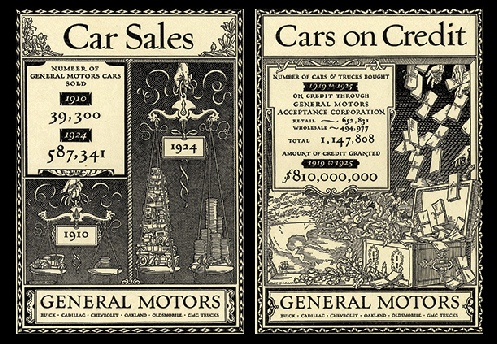
Conspicuous Consumption is a term coined by American 19th century economist and sociologist Thorsten Veblen in his book 1899 book The Theory of the Leisure Class. The term describes consumers who buy expensive goods not because they have any real "need" for them, but rather simply as a display of wealth, income, and social status to impress others around them.
Dixiecrats
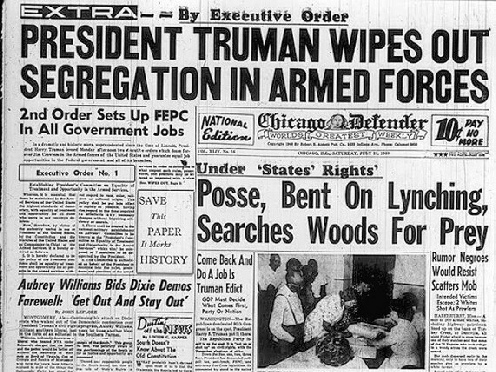
Before the presidential election in 1948, current president Harry Truman had established a President's Committee on Civil Rights, and ordered full racial integration of the military. In protest, a group of southern Democratic governors formed an independent party, the States' Rights Democratic Party, to press for maintaining segregation and white supremacy. Those affiliated with the group were referred to as "Dixiecrats," a mashup of Democrat and Dixie (the nickname of the South.) Their independent candidates lost in the 1948 presidential election, and the group disbanded. However, the term Dixiecrats has been used informally by some Northern Democrats to refer to conservative Southern Democrats since that time.
Edwardian Era

The Edwardian Era was the period that lasted the years of the reign of King Edward of England, from 1901 to 1910. Although particularly used in the UK, the influence of British culture on American society assured that the term would be used to describe styles of fashion, art, architecture, and more in America also. The Edwardian Era followed the British Victorian Era, which had been the time period during the reign of Edward's mother, Queen Victoria of England, from 1837 to 1901. (The term Victorian Era had also been used widely in America to describe significant aspects of art and culture during that period.)
Fin de Siecle
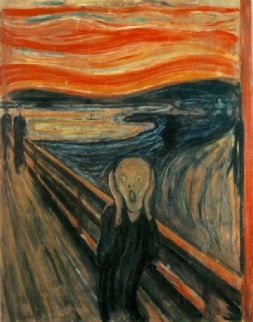
Fin de Siecle is a French term that means, essentially, End (fin) of the Century. It is particularly used, even by American historians, to speak of the period just before and after the year 1900. However, it is usually reserved for situations in which the discussion is regarding aspects of the art and literature-
Gilded Age

The Gilded Age is a term that was coined by Mark Twain in his 1873 novel The Gilded Age: A Tale of Today. It is most often used to imply that the US, during the period (from the 1870s to about 1910) was characterized by an upper class that reveled in gaudy, ostentatious public displays of splendiferous wealth, hiding, as if by a thin layer of gold leaf, many serious, ugly social problems including grinding poverty, corruption, rabid racism, horrible working conditions for the lower classes, and more.
Hegemony
(pronounced hee-JEM-eh-nee)
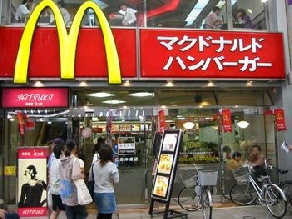
Hegemony is the predominance of one country or culture over others by political, economic, and/or military power. Or, as the term is often used in modern times, a nation may have "cultural hegemony" over many other countries or cultures by virtue of the "export" of its own culture and financial influence…as seen when American television, fashions, music, fast food restaurants and more predominate in other countries.
Imperialism
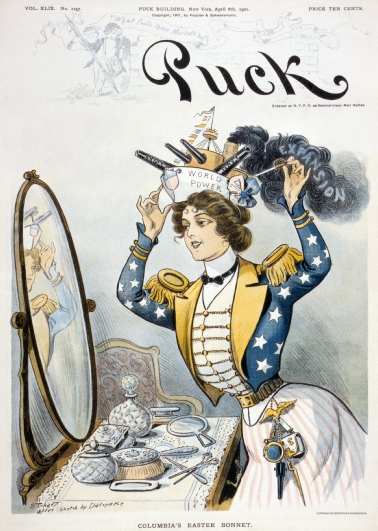
"Acquisition by a government of other governments or territories, or of economic or cultural power over other nations or territories, often by force. Colonialism is a form of imperialism." (Source) The process of imperialism leads to the formation of an empire: a group of nations or peoples ruled over by a central ruler or ruling government. Although many people think the United States has never aspired to be involved in imperialism, this is incorrect. Particularly in the late 19th century and early 20th century, when the US acquired control over such far-
Jim Crow

"Jim Crow" was originally a stereotypical character in humorous skits in 19th century minstrel shows. Created in about 1830, portrayed as clumsy and goofy and dressed in tatters, the part was performed by a white person in "black face." It isn't clear how the name got attached to the system of "legalized segregation" imposed by state and local laws in Southern states beginning in 1890 (after the Supreme Court declared such laws constitutional.) But from that point on, "Jim Crow Laws" was the term used to describe such laws segregating all public accommodations and facilities, from schools to railroad cars to drinking fountains. The term was also applied to laws that were obviously intended to make it difficult or impossible for most African-
Lost Cause of the Confederacy
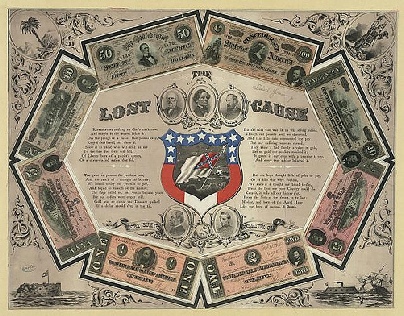
"The Lost Cause is a set of beliefs common in the white American South in the late 19th and early 20th century. It also had considerable support in the Northern United States, The beliefs portray the Confederate cause as a heroic one against great odds despite its defeat. The beliefs endorse the virtues of the antebellum ["before the Civil War"] South, viewing the American Civil War as an honorable struggle for the Southern way of life, while overlooking or downplaying the central role of slavery…
The Legend of the Lost Cause began as mostly a literary expression of the despair of a bitter, defeated people over a lost identity. It was a landscape dotted with figures drawn mainly out of the past: the chivalric planter; the magnolia-
Supporters typically portray the Confederacy's cause as noble and its leadership as exemplars of old-
This "mythology" was quite influential in both literary circles and in the making of motion pictures, including in particular Gone With the Wind. And thus it was eventually embraced even by many northerners. And it still obviously deeply affects the point of view of many when considering such issues as the use of the Rebel flag in modern times.
Lynching
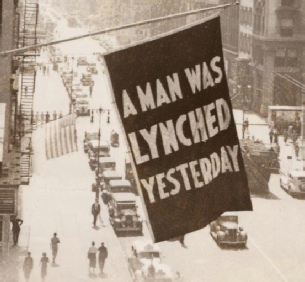
Lynching is a punishment by death inflicted on an individual-
Lynchings in America have certainly not been limited to those committed against black people. But there was indeed a veritable epidemic of particularly notorious and vicious lynchings of blacks that lasted for many generations, most notably in the period from the Civil War up through the 1920s. It became so rampant that the newly-
Many of these lynchings were not small affairs attended by a handful or even a few dozen participants. Nor were they limited to merely quickly causing the death of the accused by a simple hanging by the neck. Instead they often included numerous methods of extreme torture, at times leading up to burning the person to death. And in numerous cases they involved audiences up into the thousands of spectators watching the proceedings in very public places such as city squares. The "purpose" for such spectacle would seem in most cases not to have just been what was believed to be "proper punishment" for a specific crime, but rather a method of terrorizing the rest of the black population in an area. [Read the related series United States of Lyncherdom for a more detailed look at this topic.]
Manifest Destiny

Manifest Destiny is "…the belief or doctrine, held chiefly in the middle and latter part of the 19th century, that it was the destiny of the U.S. to expand its territory over the whole of North America and to extend and enhance its political, social, and economic influences." (Source) The direct implication was that this was "God-
Melting Pot

"A melting pot is a metaphor for a society where many different types of people blend together as one. America is often called a melting pot." (Source) It is typical in modern times to assume that when the term was coined, back in the late 1800s, it was a widely-
But the reality is that there never has been a time when the average US citizen was enthusiastic about welcoming immigrants. There was such frustration about the influx of immigrants in the decades surrounding the beginning of the 20th century that the Immigration Act of 1924 totally eliminated any immigrants from Asia and established severe limits for all others based on national origin. The emphasis was on limiting most immigration, as far as possible, to individuals from the British Isles and Northwestern Europe.
This was accomplished by allotting to each country the number of visas equal to 2% of the US population that existed in 1890 descended from each country. Since most immigration from Eastern and Southern Europe had occurred after 1890, this severely limited new immigrants from those areas. For instance, from 1900 to 1910, there were 200,000 immigrants admitted each year from Italy. With the 1924 Act, the quota allowed only 4,000 a year.
Minstrel Show
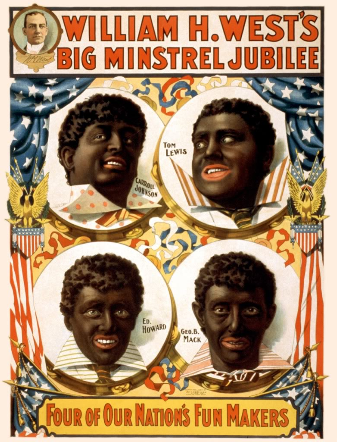
Minstrel Shows, developed first in the 1830s, were theatrical performances based on racial stereotypes of black characters. They consisted of music, dancing, stand-
Muckraker
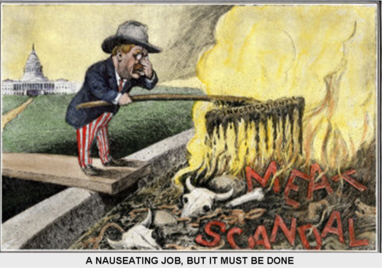
"Muck" is a word used to describe a layer of wet dirt or mud, often mixed with filth such as barnyard manure. An actual muckrake would be a farm implement used to scrape up dung. As a metaphorical term, a "muckraker" is a person, often a reporter or researcher, who seeks out, investigates, and then publicly exposes misconduct of prominent individuals , businesses, or institutions. "Muckraking journalism" was very active during the era around 1900, with "investigative reporters," often for popular magazines, looking into the evils and underhanded dealings of an industry, such as meatpacking, or an institution, such as a mental asylum, and then writing a series of articles as an exposé in a publication.
Planned Obsolescence
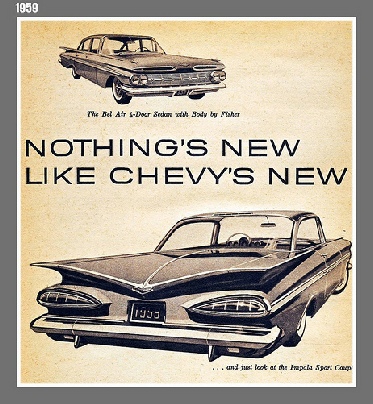
"Planned obsolescence or built-
Once the public is saturated with a certain kind of goods…almost every family has a stove or toaster or TV or car, for instance… the only way to keep the economy active and growing is to "fix it" somehow so that people will buy replacements on a fairly regular basis. There are several ways to do this, each a part of the method of planned obsolescence. Items that can be changed in fashion or style regularly-
Items that don't lend themselves so easily to style changes, such as toasters, can be constructed so that they have parts-
Plessy v Ferguson
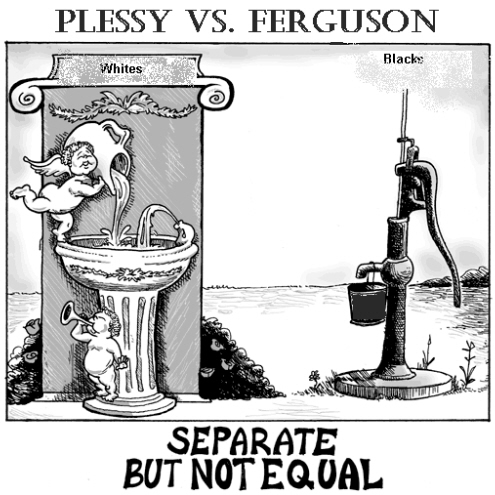
"Plessy v. Ferguson, … (1896), was a landmark United States Supreme Court decision upholding the constitutionality of state laws requiring racial segregation in public facilities under the doctrine of "separate but equal". …"Separate but equal" remained standard doctrine in U.S. law until its repudiation in the 1954 Supreme Court decision Brown v. Board of Education." (Source)
Race Riots
Since the 1960s, when one hears the term "race riot," it is typical to expect that this implies a violent protest by groups of a "minority race," typically African Americans, over some perceived racially-
In the century after the end of the Civil War, the term Race Riot almost inevitably meant racially-
Many injuries and deaths were often a result, along with destruction of homes, businesses, schools, and more. In addition, it was not uncommon for the aftermath to include complete abandonment by the blacks of the area-
Sold down the river
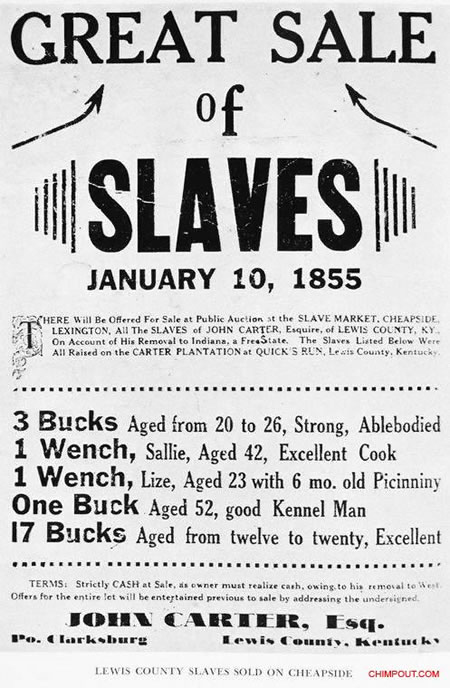
Eli Whitney's invention of a mechanical cotton gin (which efficiently removed seeds from clumps of raw cotton) greatly increased the speed of preparing cotton for sale by the early 1800s. A person who could process only one pound of cotton a day formerly could now process fifty pounds a day with the gin. This made it a highly desirable plantation crop in the Deep South in the US, and the size and number of plantations throughout the region skyrocketed.
But only the processing was enhanced by the gin…harvesting cotton was still an extremely labor-
Most black slaves had been concentrated since colonial times in New England and the Upper South, such as Virginia. Although many were used in agriculture there, such as planting and harvesting tobacco, it was typical for a significant percentage to be household servants and craftsmen.
With the huge expansion in cotton production, slaves became a much more profitable commodity in the early 1800s, and it became common for slaves to be sold "down the river" (the Mississippi or Ohio Rivers) to buyers in the Deep South. Conditions of life for such slaves were usually much more harsh than they had been "Up North," and it was much more typical for severe cruelty to be used by overseers. Thus there was a great fear among the enslaved blacks of being "sold down the river." And the term eventually entered American English as a catch-
Streamline Moderne


Streamline Moderne is a type of design and architecture that was particularly prevalent in the 1930s and 1940s, in which everything from toasters to trains all looked sleek, often almost bullet-
Sundown Town

"Sundown towns were a form of segregation, in which a town, city, or neighborhood in the United States was purposely all-
Although the definition given describes this phenomenon in the past tense, this is inaccurate. Although the Civil Rights Act of 1968 legally forbids such policies, there are still many towns and areas throughout the nation...both North and South…where there is an "unspoken" understanding that people of color are unwelcome to become residents. And in some cases, it is common knowledge that it is still literally dangerous for blacks to be within the city limits "after sundown." They will not be "legally" stopped by local law enforcement from being present, but they may be harassed by police…and intimidated and perhaps even attacked by informal groups of hostile whites.
Victorian Era

The Victorian Era is a descriptive term for the period of the reign of Queen Victoria of England, from 1830 to 1900. Although it spanned many decades, there are many features of architecture, furnishings, fashion, customs, and manners from that time period that are commonly considered "Victorian." And because of the extent of British cultural influence in America, the term is often used to describe many facets of American life of the same period that mirrored what was typical in Britain.
~~~~~
Many more entries coming soon!


Exploring our past to sort out myth from reality
Share this Page on
Facebook or Twitter

These are the voyages of the TimeShip Anachron.
Our Mission: To boldly explore the past, dispelling
mythinformation and mythconceptions
of American History along the way.
 Visit us on Facebook
Visit us on Facebook
